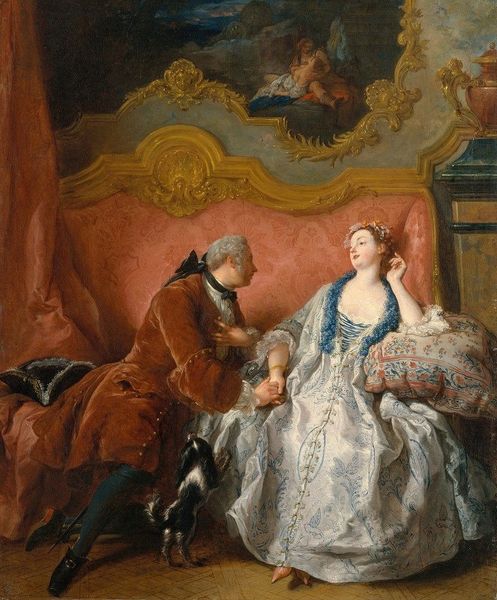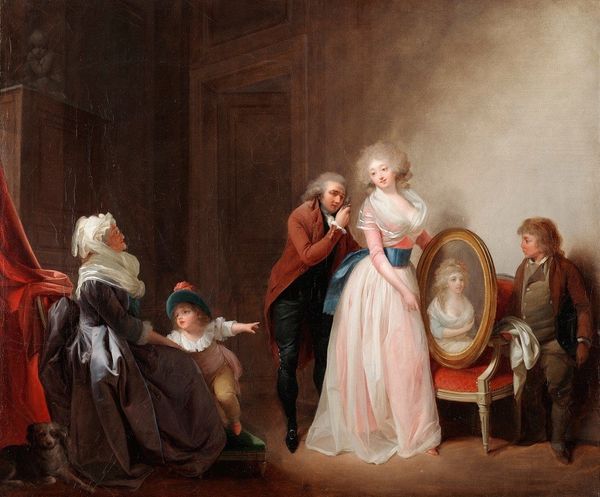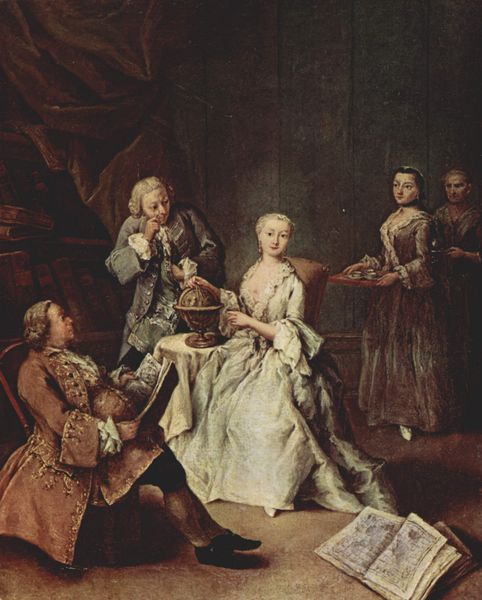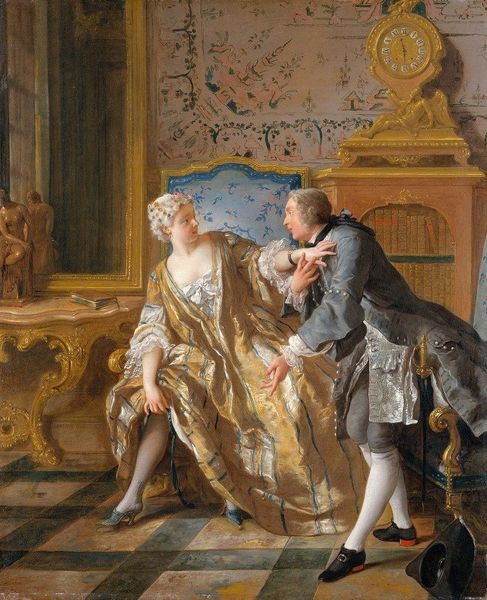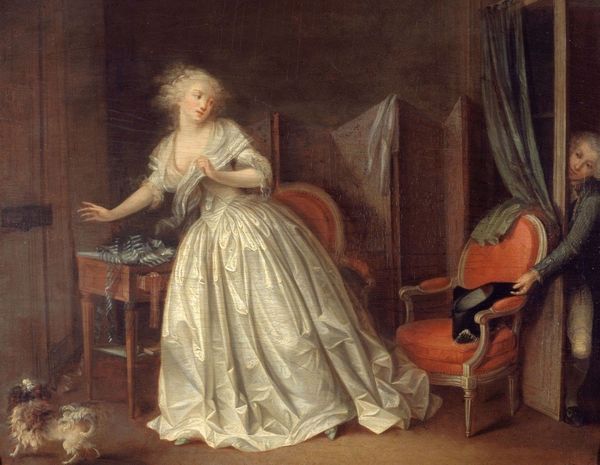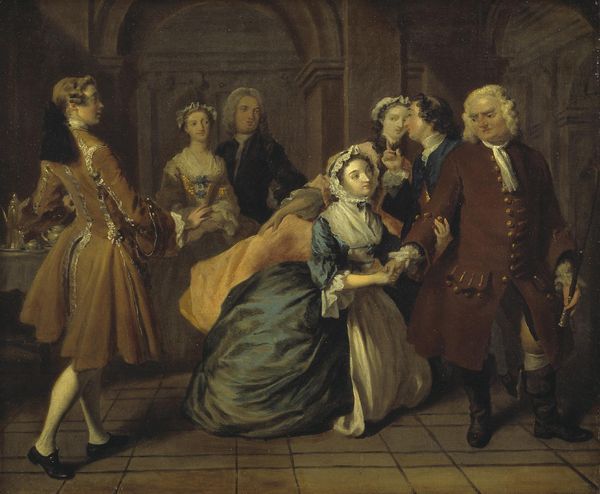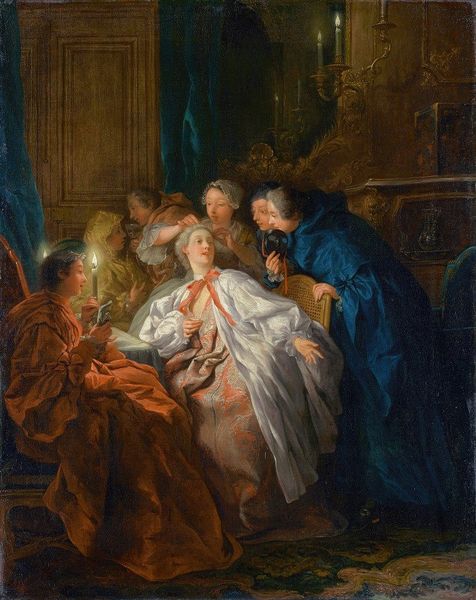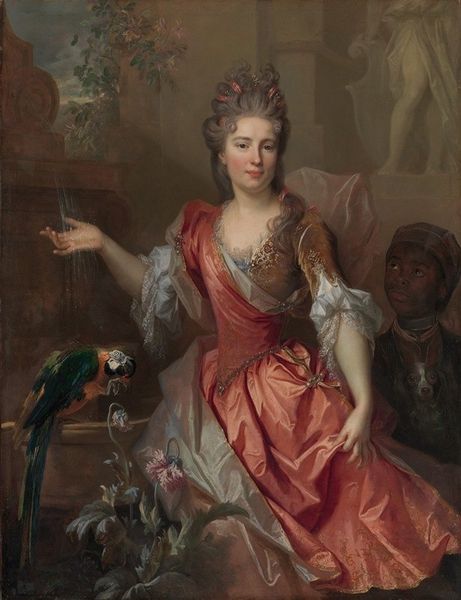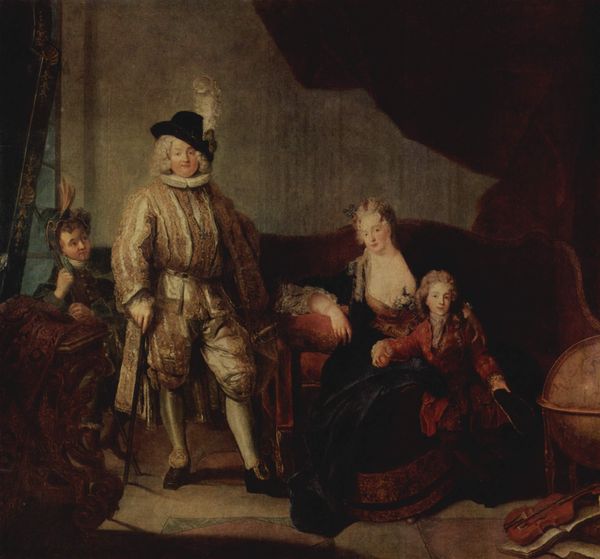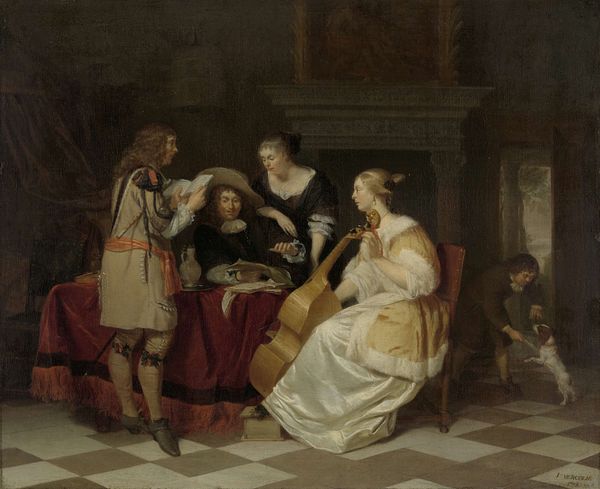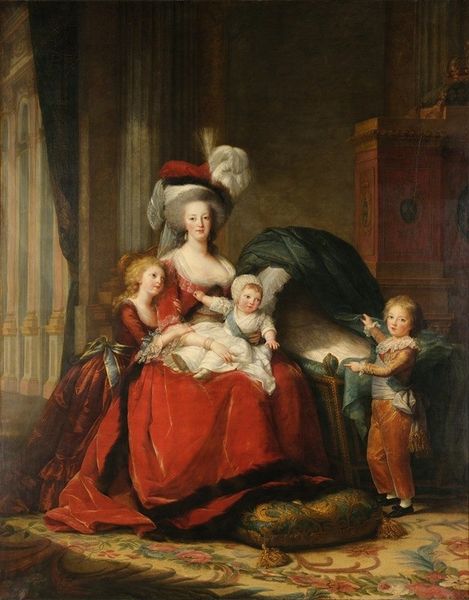
Copyright: Public domain
Curator: Christian August Lorentzen completed "Stiller Musikgenuss," or "Silent Musical Enjoyment," in 1784, utilizing oil paint. What’s your first impression? Editor: It's undeniably a moment frozen in time, isn’t it? A hushed atmosphere. Though "enjoyment" feels... questionable, judging by the older gentleman's rather dour expression. Curator: Perhaps he yearns for a different key or tempo. It is vital to consider the culture of musical patronage during this period. Music provided not merely pleasure, but avenues of social positioning. Think of gendered roles and expressions of power embedded in domestic life. The central woman holds the sheet music. The man in blue is clearly an admirer. But their expressions remain... guarded. Editor: I see that tension. And look at the composition! Notice how the light illuminates her satin dress and the musical notes, while the rest of the scene remains shadowed? Light, here, surely acts as a symbolic spotlight. We can't ignore, either, how musical imagery often signifies harmony, or, indeed, discord within relationships. Curator: The arrangement reflects a world teetering on revolution. What seems an intimate gathering masks simmering societal structures. Editor: The symbolism in academic painting of this era is often intentional. The muted colors, combined with the very tangible expressions, hints at a contained psychological drama. It leaves me wondering what truths are held silently between these people, the melody never truly voiced. Curator: I agree. Considering Lorentzen's other work which challenges established hierarchies and confronts uncomfortable themes adds yet another rich layer. He invites us to consider what this moment of "silent musical enjoyment" truly means, both then and now. Editor: Well said! Looking again, it becomes less a painting *about* music, and more a visual score reflecting deeper human experiences.
Comments
No comments
Be the first to comment and join the conversation on the ultimate creative platform.
